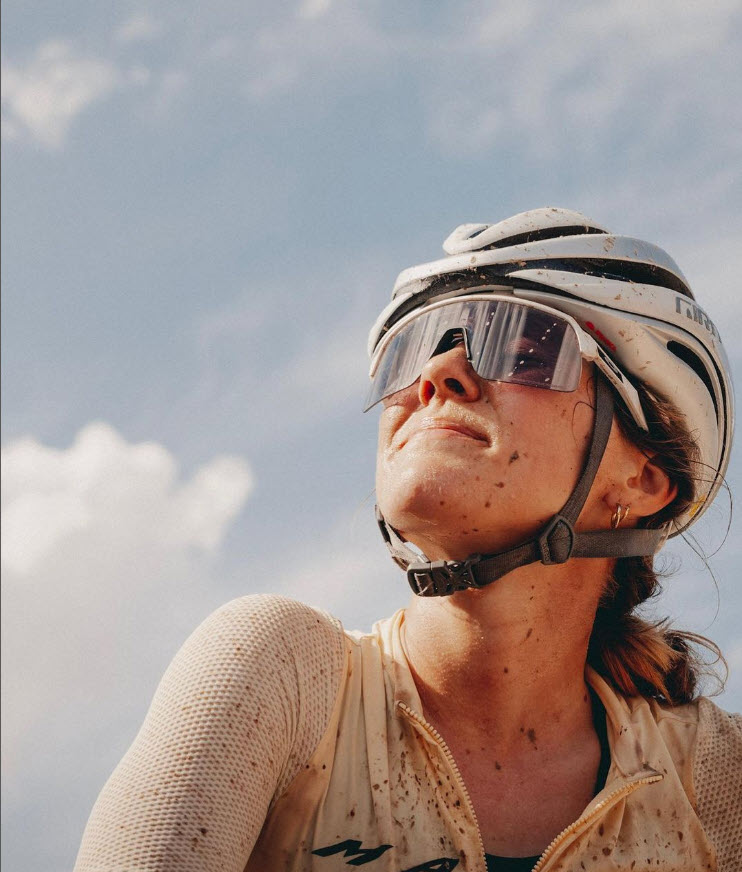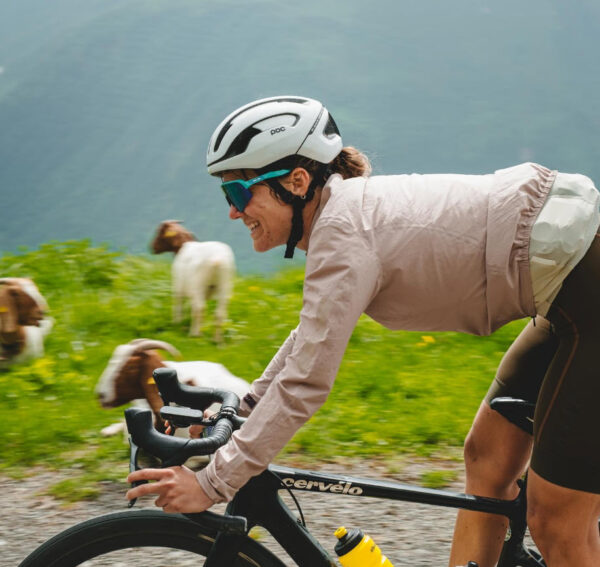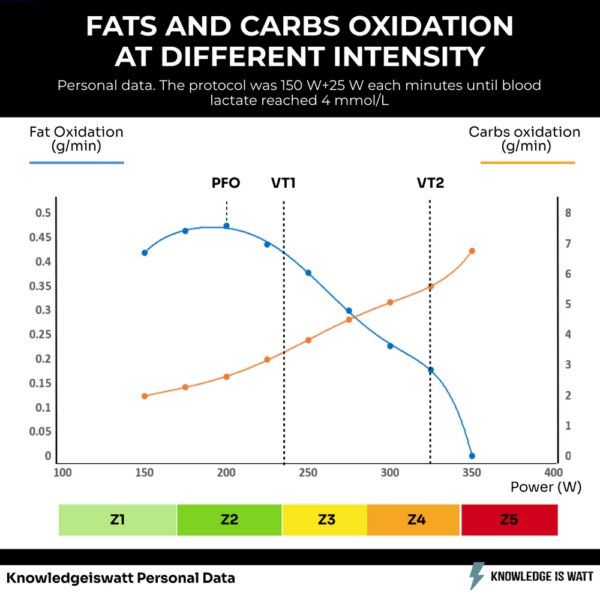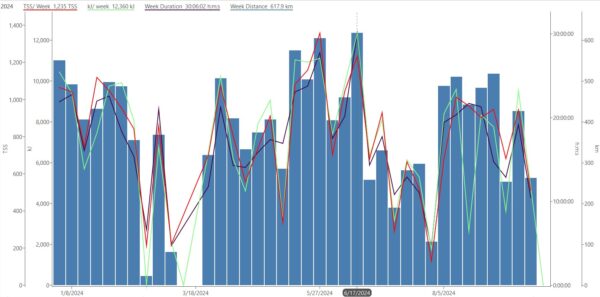The Road to UCI Gravel World Championship

This past month, Team USA’s Elite UCI Gravel World's roster came out for said race taking place on October 5-6th in Leuven, Belgium. On that roster, two Source Endurance athletes were selected to participate in the Elite Women’s race. This is quite a big deal, as our small coaching company is sending a significant portion of the USA Elite Women’s team. Those athletes are Whitney Allison and Sofia Schugar. I happen to coach Sofia Schugar, one of the athletes selected. In this article, I wanted to share the process of working with Sofia with Worlds selection as the primary goal this season, along with the specifics of what training was necessary to not only qualify for Elite Worlds, but to race Elite Worlds.
When having our first coaching call in January of this year, one overarching goal we set for Sofia was to qualify for the elite race at the the UCI Gravel World Championships. In order to qualify, she would have to place in the top 25% in an elite women's race included in the UCI Gravel World Series. One of the biggest limiting factor for American racers is that there is only one single race option in the US that is on this World Series calendar, with a second North America option in Canada. However, Sofia has an opportunistic advantage in the fact that she currently resides in Girona, Spain. This has allowed us to build out a cohesive race calendar that would give her ample opportunity to qualify, while we also build fitness towards Worlds. After an impressive 9th place finish at the Traka 360 (not in the UCI Gravel World Series), Sofia scored an 8th place at both Wish One Millau, and Gravel Suisse to secure her spot for the World Championships.
Our Training Focus
During our coaching sessions, we narrowed our focus to improving a few specific details that would help Sofia continue her performance progression. Eating more carbs during her training and racing was underscored as a very important process goal. In addition to increasing her carbohydrate intake, we set the goal of improving Sofia’s fatigue resistance in order to maintain a high power output after many kilojoules have already been burned. In order to improve performance, we also set the goal of improving Sofia’s short duration power over FTP, specifically in the 3-6 minute range, as this was often a major determinant of whether she would make the front group selection or not.

Glycogen storage and utilization is a major limiting factor in endurance sports, but even more so in elite gravel races where winning times are often well beyond the six hour mark. In order to train like an elite athlete, Sofia was going to have to improve her ability to recover. When we first started working together, Sofia was averaging about 30 grams of carbohydrate per hour. We agreed that this was not going to be a sufficient amount, especially since Sofia often trains 20+ hours per week. Let’s do some quick math to demonstrate the importance of carbohydrate intake, especially for a high volume athlete.
The math behind this generalization is a bit more complicated than this, because the science is also complex, so use this as a general reference: If Sofia is training about 22-24 hours per week, she is often burning 9000-10000 Kilojoules of energy, roughly 10000 calories per week. Now all of this energy isn’t coming from carbohydrate utilization, but at LT1, or aerobic threshold, (ballpark 200 watts for Sofia) she is burning roughly 100 grams of carbohydrates per hour. This can equate to a rough ballpark of half of those kilojoules burned, or about 5000 kJs. So calculating only the pedaling aspect, during a single week of training Sofia burns roughly 1500 grams of carbohydrates, in addition to everything else she does off the bike. That is a staggering amount, and it doesn’t take much convincing after doing the math that carbohydrate intake on the bike needs to be quite high in order not to run a deficit throughout the week. Not to mention, according to the Journal of Physiology, as your muscles fatigue, their ability to store glycogen becomes diminished.
We bumped Sofia’s training intake of carbohydrates from 30 grams per hour up to 60-75 grams per hour during most training sessions and up to 90+ grams per during races and intense training sessions. This had a tremendous impact on not only Sofia’s race performance, but also on her ability to recover and maintain a heavy training load.

carbohydrate oxidation rates are still quite high even at relatively low intensities and very high at peak intensities
Fatigue Resistance Reigns Supreme
In addition to increasing Sofia’s carbohydrate intake, another important factor we worked on this past training season was improving Sofia’s fatigue resistance. We worked on this in a couple ways. The first way was simply to increase Sofia’s training volume and add more time riding endurance pace. Another training strategy we implemented was performing threshold intervals or sweet spot under fatigue. One common session I utilized in Sofia’s rotation was a freeform sweet spot workout where the goal was to accumulate up to 120 minutes of time at 85%-90% of FTP, often in increments of 20-30 minutes over the course of a 5-6 hour ride. This is a great gravel race simulation training session and allowed Sofia to also experiment with carbohydrate intake to maintain such a high kilojoule burn. We were able to get Sofia’s 20 minute peak within 10% of her peak after 2500 kJs, a 10% increase year over year.
Making the Lead Group
The pacing strategies in elite gravel races are quite unique. Oftentimes, I describe gravel races as road races that turn into mountain bike races. Typically the first 1-2 hours of gravel races often race like road races, with big accelerations and attacks to create a select lead group. The second half of the race plays out more like a mountain bike race, where attrition and fatigue resistance play a bigger role to select the contenders out of the lead group. Sofia naturally has great fatigue resistance, but sometimes struggles to make the elite front group. This led us to working on her short term power in the 3-6 minute range in order to consistently be on the right side of the split. We estimated Sofia would need to perform at around 5.3w/kg for 5 minutes to make this elite front group in your average UCI Gravel World Series race. Our bread and butter workout for this was VO2 sessions where we would aim to accumulate 20+ minutes time at or above 90% of Sofia’s VO2 max, my favorite is a set of 7x3 minute intervals performed at Sofia’s VO2 max power, with 3-6 minutes of recovery between reps.
Hard Work Pays Off
Through our specific training focus, Sofia was able to land big results such as a top 10 finish at the Traka 360, and a pair of 8th places at UCI Gravel World Series races Wish One Millau in France and Gravel Suisse. Her consistency in some of the hardest and most competitive gravel races in the world landed her a spot on Team USA for the World Championships, goal accomplished. Watch the video below for her final preparations.
About the Author
Taylor Warren has raced at the elite level since 2014 and graduated with a Bachelor's Degree in Exercise Physiology from Colorado State University in 2015. Taylor continues to race at the elite level with CS Velo Racing, gaining experience and wisdom to help impart to the athletes he works with. Taylor is also a student of the game, with a passion for human performance and physiology, he is able to combine his race experience with an understanding of how the human body responds to training to deliver the best possible coaching experience. Taylor believes in a practical, holistic approach to coaching and training that values the athlete’s lifestyle and understands how to make the process approachable and enjoyable.
Learn more about Taylor and Source Endurance here.
References
Ørtenblad N, Westerblad H, Nielsen J. Muscle glycogen stores and fatigue. J Physiol. 2013 Sep 15;591(18):4405-13. doi: 10.1113/jphysiol.2013.251629. Epub 2013 May 7. PMID: 23652590; PMCID: PMC3784189.
Hawley, J., et al. "Training techniques to improve fatigue resistance and enhance endurance performance." Journal of sports sciences 15.3 (1997): 325-333.
Knechtle, B., et al. "Fat oxidation in men and women endurance athletes in running and cycling." International journal of sports medicine 25.01 (2004): 38-44.
Gallo, Gabriele PhD. “Fats and Carbs Oxidation at different intensities” Knowledge is Watts, https://www.knowledgeiswatt.com/blog-3-2/a0wgpo19rn58yl6e623d1w8zmxto6l. 20 September 2024.




